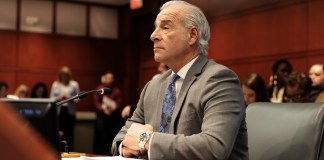Renowned Texas meteorologist Troy Kimmel spoke on Inside Texas Politics about the forecast preceding the deadly flooding in the Hill Country.
TEXAS, USA — Troy Kimmel has been involved in meteorology for nearly 50 years, with a particular focus on central Texas.
Even though he’s now retired, he still forecasts for the University of Texas’ Office of Emergency Management, the city of Kyle, and even for Q2 Stadium, home to Austin FC, a Major League Soccer club.
Needless to say, over the years, the renowned meteorologist has seen just about everything… until the catastrophic flooding in the Texas Hill Country on July 4.
“The last week has probably been the most difficult for me as far as forecasting,” Kimmel told us on Inside Texas Politics.
At least 120 people died during the flooding, including at least 36 children in Kerr County. More than 160 people remain missing.
Immediately following the tragedy, there was a great deal of discussion about the timing of warnings issued by the National Weather Service, or NWS.
Kimmel, who’s worked closely with the NWS over the years, says those folks in the Austin and San Antonio offices did an excellent job that night.
In the days before the flooding, there were signs that something was brewing, and NWS meteorologists started tightening their forecasts and increasing the alarms, according to Kimmel.
A flash flood watch was issued around 1 p.m. on Thursday, July 3.
Kimmel says at the bottom of that watch, it also alerted folks to the fact that 4 to 7 inches of rain would be possible. He argues that that warning should have been enough to alert local leaders to be more prepared because he argues that that amount of rain alone could cause problems in this area, known as flash flood alley.
“Every warning they put out in the last week has been either considerable or above by a matter of office policy, and it’s come to every one of these in those areas,” Kimmel said while holding up and pointing to his cell phone.
The NWS issued a warning at 1:14 a.m. on Friday, July 4.
The Guadalupe River reached its peak level of 37.52 feet at around 7 a.m. later that morning, setting a new all-time flood record for the area.
Because Kimmel believes the National Weather Service and forecasters did their job, he now thinks the focus should turn to whether there was adequate preparation and planning on the part of local and state leaders, campgrounds, and the general public.
Part of the problem, he argues, is that many members of the public may be suffering from “warning fatigue,” often ignoring the many different alerts they receive on their phones.
Kimmel says he just shakes his head when people tell him this.
“If you’re not getting the warning because you’ve turned something off on your phone, that’s not the fault of the weather service. It’s not the fault of emergency management. That’s a personal decision you’ve made,” Kimmel explained. “This should really focus our minds, shouldn’t it? If we are one of those people who tend to turn those things off or disregard them and kind of turn the phone off because we want to go back to sleep, this should be a real wake-up call to all of us.”
The point now, Kimmel argues, is that everyone needs a plan, even if you don’t think a situation will reach a catastrophic level.
The meteorologist says he knows anyone who played a role during the tragedy, including the National Weather Service and forecasters, will continue to be scrutinized. And he says he thinks it’s necessary for everyone to sit down and have painful conversations about what went wrong.
He also made clear he doesn’t think fault will be found with the NWS, and he thinks their process worked in this situation.
As Texas picks up the pieces and tries to figure out what did go wrong, Kimmel thinks the examination should start with examining the emergency action plans for local officials, and he says just as importantly, for any camp located along a river in Texas.
Camp Mystic, a private Christian summer camp for girls started in 1926 that sits along the flood-prone area of the Guadalupe, lost 27 campers and counselors in the tragedy.
But officials at another camp, the Presbyterian Mo-Ranch Assembly, had been monitoring the weather situation for 24 hours before the flooding. And around 1 a.m., Mo-Ranch leaders enacted their emergency plan and started evacuating campers, some 70 children and adults. Everyone at that camp is accounted for.
“Hope is not a plan,” Kimmel told us.
Great Job & the Team @ WFAA RSS Feed: news Source link for sharing this story.





